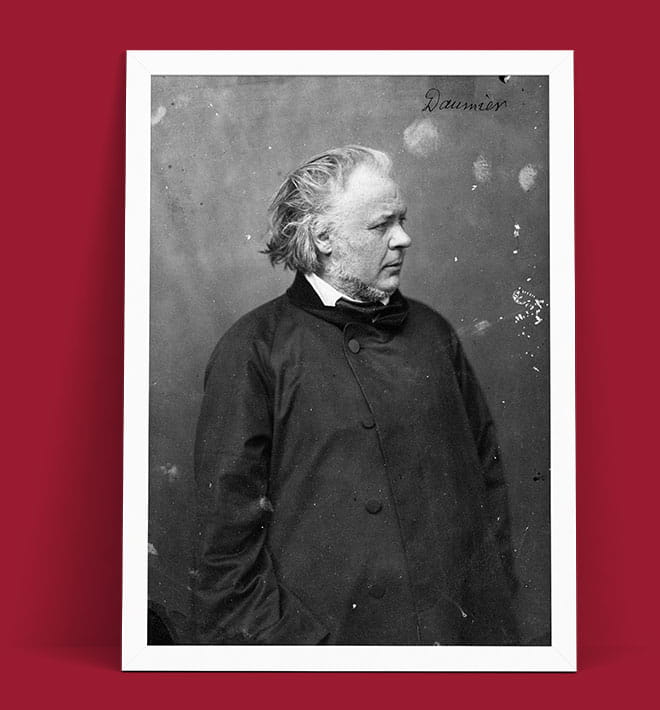Master of Caricature and Lithography
Daumier's prowess in lithography led him to become one of the most prominent caricaturists of the 19th century. He produced nearly 4,000 lithographs, many of which were published in satirical journals like La Caricature and Le Charivari. His works offered sharp critiques of French politics and society, targeting figures such as King Louis-Philippe and the bourgeoisie. One of his most controversial pieces, "Gargantua," depicted the king in an unflattering light, leading to Daumier's imprisonment for six months in 1832.
Exploration of Painting and Sculpture
Beyond printmaking, Daumier was also a dedicated painter and sculptor. His paintings, though less recognized during his lifetime, delved into themes of social injustice and the human condition. Notable works include "The Third-Class Carriage," which portrays the hardships of the working class. In sculpture, his series of busts titled "Les Célébrités du Juste Milieu" satirized political figures of his time.
Artistic Style and Influence
Daumier's style is characterized by expressive lines, dynamic compositions, and a keen eye for human emotion and satire. His ability to capture the essence of his subjects with both humor and empathy set him apart from his contemporaries. While his paintings were underappreciated during his life, they later gained recognition for their contribution to Realism and their influence on artists like Vincent van Gogh and Pablo Picasso.
Later Years and Legacy
In his later years, Daumier faced financial difficulties and declining health, including deteriorating eyesight. Despite these challenges, he continued to create art, focusing on themes like Don Quixote, which resonated with his own struggles. A major exhibition of his paintings in 1878 brought him some recognition shortly before his death on February 10 or 11, 1879, in Valmondois, France. Today, Honoré Daumier is celebrated as a pioneer of satirical art, whose works provide a profound commentary on 19th-century French society.


